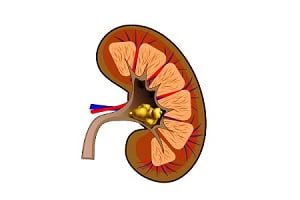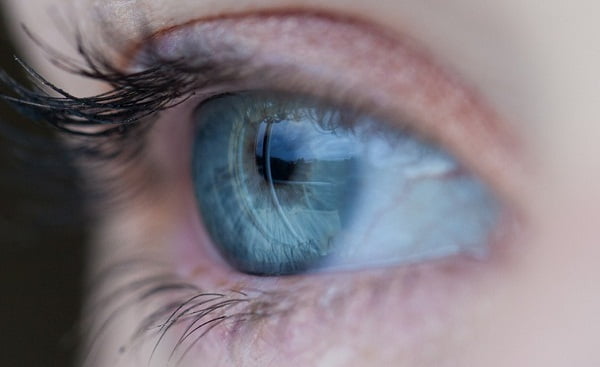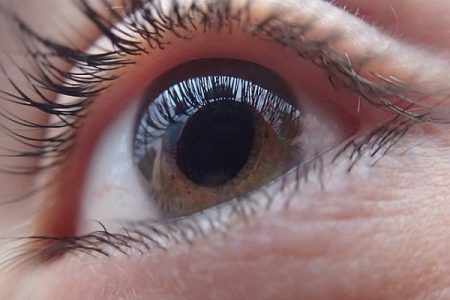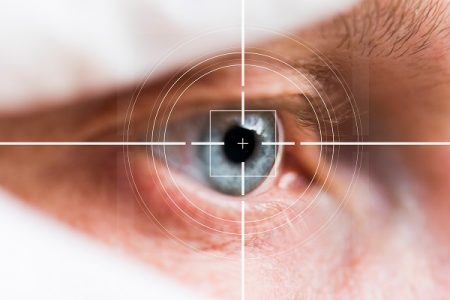What is diabetic retinopathy?
Diabetic retinopathy is a chronic and progressive condition of the eye caused as a complication of diabetes, leading to damage of the retina – the light sensitive tissue at the back of the eyes which helps you in seeing fine details. In severe cases you may lose your sight.
Diabetic retinopathy happens in more than half of the people who develop diabetes. It first develops with no signs or mild vision problems and eventually causes blindness.
Diabetic retinopathy occurs by the changes in retinal blood vessels caused by a change in blood glucose levels, leading to swelling (Diabetic macular edema – it is a swelling in the central part of the retina called macula) and leaking of these blood vessels in the rear of the eye causing blurred vision. In some other cases, blood vessels grow on the surface of the retina.
The longer you have diabetes, the more likely you will develop diabetic retinopathy. If left untreated, it seriously affects the vision and can lead to blindness.
What are the stages of diabetic retinopathy progression? What are the four stages of diabetic retinopathy?
Diabetic retinopathy progresses by these four stages.
Mild Nonproliferative Retinopathy
In this stage, the walls of blood vessels in your retina weaken and tiny bulges known as microaneurysms protrude from the walls of the tiny blood vessels. They are like small areas of balloon-like swelling in the retina’s blood vessels.
Microaneurysms may leak blood and fluids into the retina. This is also known as background retinopathy.
Moderate Nonproliferative Retinopathy
This stage is reached when the nourishing blood vessels of the retina gets blocked.
Severe Nonproliferative Retinopathy
Here, more and more of the blood vessels are blocked, cutting the supply of the blood to several areas of the retina. These areas of the retina react by secreting growth factors that signal to the retina to grow new blood vessels for nourishment.
Proliferative Retinopathy
At this advanced stage, proliferation of new blood vessels happens in response to the growth factors released by the retina. These new blood vessels are fragile and abnormal, which makes them vulnerable to leak and bleed.
These fragile new vessels often bleed into the vitreous – the clear gel which fills the inside of the eye. If they are bleeding little, you might see few dark floaters but in excess this may block the vision.
These new blood vessels can also form scar tissues which can cause problem with the macula or lead to a detached retina.
What are the symptoms of diabetic retinopathy?
The early stages of diabetic retinopathy are usually without symptoms and pain. This condition often progresses unnoticed until it affects vision.
Diabetic retinopathy symptoms may include:
- Blurred and patchy vision
- Dark and empty areas in your vision
- Double vision
- Fluctuating vision
- Impaired color vision
- Eye pain
- Spots or dark floating in your eyes (floaters)
- Vision loss
What are the causes of diabetic retinopathy?
It is caused by the prolonged high blood glucose levels. This excess sugar from diabetes damages the blood vessels that supply the blood and nourishment to the retina.
When damaged, these blood vessels become blocked which deprive the retina to the blood supply. This loss of blood flow results in growing of other weaker blood vessels which can leak and create scar tissues that can cause a loss of vision.
What are the risk factors for diabetic retinopathy?
Anyone who is having diabetes is at risk of developing diabetic retinopathy. Your risk of diabetic retinopathy increases with the duration of the diabetes.
About 60% of the patients with diabetes for 15 years or more develop some kind of blood vessels damage in their eyes. You are at greater risk of diabetic retinopathy if you:
- have diabetes for a long time
- have a poorly managed blood glucose level, generally high levels for long time
- have high blood pressure
- have high cholesterol
- are pregnant
- uses tobacco
- are of Black, Hispanic, Native American, Asian or Afro- Caribbean background
How is diabetic retinopathy diagnosed?
Diabetic retinopathy can be best diagnosed with the help of a comprehensive and detailed, dilated eye exam.
During this exam, a physician places drops in the eyes to make the pupils to dilate to allow a better view of the inside of the eye, particularly the retinal part of the eye.
During the exam, your doctor will look for:
- abnormal blood vessels
- swelling, blood or fatty deposits in the retina
- growth if new blood vessels and scar tissues
- bleeding in the vitreous jelly
- retinal detachment
- abnormalities in the optic nerve
Test and methods for diagnosing diabetic retinopathy
Supplemental tests include:
- Visual acuity test: This test measures how well you see at different distances.
- Tonometry: This test measures pressure inside your eye.
Optical Coherence Tomography (OCT)
Your doctor may ask for OCT exam. This test provides cross-sectional images of the retina that shows the thickness of your retina, which helps determining in any fluid leakage in the retinal tissue.
Fluorescein Angiography
In this test, your doctor injects a special dye into your arm, and takes the picture inside of your eye, as the dye circulates through it. These images help in detecting any closed, damaged and leaking blood vessels or any abnormal blood vessel growth.
What are the treatment options for diabetic retinopathy?
Treatment of diabetic retinopathy largely depends on the stage and severity of diabetic retinopathy. Generally, no treatment is needed for mild and moderate non-proliferative retinopathy, until there is clear sign of macular edema.
People with diabetes should control their levels of blood sugar, blood pressure, and blood cholesterol to prevent progression of diabetic retinopathy.
Different treatment approaches employed for treating proliferative retinopathy includes:
Focal laser treatment
During this treatment, also known as photocoagulation, leaks from abnormal blood vessels are treated with laser burns. It helps in slowing or stopping of blood leakage in the eye.
Scatter laser treatment
During this process, scattered laser burns are used to treat the areas of the retina away from the macula.
The burn causes the abnormal new blood vessels to shrink and scar. Your vision will be blurred for a day after the procedure and some loss of peripheral or night vision is possible. It is also known by the name panretinal photocoagulation.
Vitrectomy
During this procedure, blood and scar tissues are removed from the middle (vitreous) of the eye using a tiny incision in your eye.
These procedures are best to slow or stop the progression of the disease but not a cure. Even after the treatment, you will need regular eye exams.
How can diabetic retinopathy be prevented?
If you are diabetic, you can’t always prevent diabetic retinopathy. However, you can reduce the risk of getting diabetic retinopathy by doing the following:
- Monitor your blood sugar level
- Manage your cholesterol level
- Keep blood pressure under control
- Quit smoking and using other types of tobacco
- Pay attention to vision changes
- Have regular eye exams
- Take your prescribed medication
- Exercise regularly
- Eat a healthy and balanced diet
What are the complications of diabetic retinopathy?
Diabetic retinopathy is associated with growth of abnormal blood vessels in the retina. These complications can lead to serious problems eventually resulting in vision loss.
Retinal detachment
In this condition, retinal detachment, your retina is pulled away from the back of the eye by scar tissues. This causes spots floating in your vision and severe vision loss.
Glaucoma
New blood vessels growth may happen in front part of the eye interfering with the normal flow of fluid out of the eye, causing pressure inside the eye to build up. This pressure can damage the nerve that carries image from your eye to brain. This condition is called glaucoma.
Vitreous hemorrhage
The new blood vessels may fill the center of your eye by bleeding. In more severe cases of bleeding, blood can fill the cavity of vitreous gel and completely block your vision.
Blindness
Eventually, diabetic retinopathy leads to a complete vision loss.







